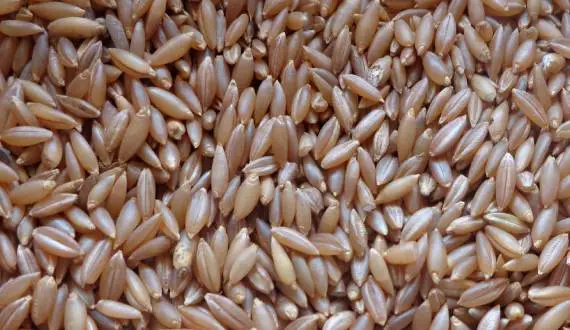Origins and Harvesting
Bamboo rice is not cultivated in the traditional sense. Instead, it is the result of a rare flowering phenomenon in bamboo trees, which occurs once in several decades. When bamboo plants flower, they produce seeds that resemble rice grains. These seeds, known as Moongil rice, are gathered by local communities, particularly in the tribal areas of Kerala, Tamil Nadu, and the Northeastern states of India.
The rarity of bamboo flowering makes Moongil rice a prized commodity. Its limited availability adds to its allure, making it a sought-after ingredient for those who appreciate its unique qualities.
Nutritional Benefits
Moongil rice is a powerhouse of nutrients, offering numerous health benefits:
1. Rich in Protein: This rice variety contains higher protein levels compared to other rice, making it an excellent source of plant-based protein, especially for vegetarians and vegans.
2. High Fiber Content: The high fiber content aids in digestion, promotes a healthy gut, and helps in maintaining optimal bowel movements.
3. Packed with Antioxidants: Bamboo rice is rich in antioxidants, which help combat oxidative stress and reduce the risk of chronic diseases.
4. Essential Minerals: It is a good source of essential minerals such as magnesium, iron, and phosphorus, which are crucial for various bodily functions, including bone health and energy production.
5. Low Glycemic Index: The low glycemic index of Moongil rice makes it suitable for individuals managing diabetes and those looking to maintain stable blood sugar levels.
Culinary Uses
Moongil rice's distinct texture and flavor lend themselves to a variety of culinary applications. Here are some popular ways to incorporate bamboo rice into your diet:
1. Traditional Dishes: Moongil rice can be used as a substitute for regular rice in traditional Indian dishes like biryani, pulao, and khichdi, adding a unique twist to these beloved recipes.
2. Porridge: Bamboo rice porridge, cooked with milk and sweetened with jaggery or honey, is a nutritious and comforting breakfast option.
3. Rice Salads: Its firm texture makes Moongil rice ideal for rice salads, where it can be mixed with fresh vegetables, herbs, and a light dressing for a wholesome meal.
4. Desserts: In South India, bamboo rice is often used to prepare sweet dishes like payasam and kheer, where its subtle sweetness enhances the overall flavor.
5. Soups and Stews: Moongil rice can be added to soups and stews, providing a nutty flavor and added nutrition to the dish.
Cultural and Ecological Significance
The harvesting of Moongil rice is deeply intertwined with the cultural practices and traditions of tribal communities. It is considered a gift from nature, celebrated for its rarity and nutritional value. The collection of bamboo rice also plays a crucial role in the livelihoods of these communities, providing a source of income and sustenance.
From an ecological perspective, the flowering and subsequent seeding of bamboo are vital for the regeneration of bamboo forests. The seeds that are not harvested help propagate new bamboo plants, ensuring the sustainability of these vital ecosystems.
Supporting Sustainability
By choosing Moongil rice, consumers can contribute to the sustainability and well-being of tribal communities. The purchase of bamboo rice supports traditional harvesting practices and promotes biodiversity. Additionally, it encourages the conservation of bamboo forests, which are crucial for environmental health.
Conclusion
Moongil rice is a unique and nutritious grain that embodies the rich cultural and ecological heritage of India. Its exceptional health benefits, coupled with its distinctive flavor and texture, make it a valuable addition to any diet. By embracing bamboo rice, you not only enjoy a wholesome and delicious meal but also support sustainable practices and the preservation of traditional livelihoods.
Discover the remarkable qualities of Moongil rice and savor a grain that carries the essence of nature's bounty and the wisdom of ancient traditions.


